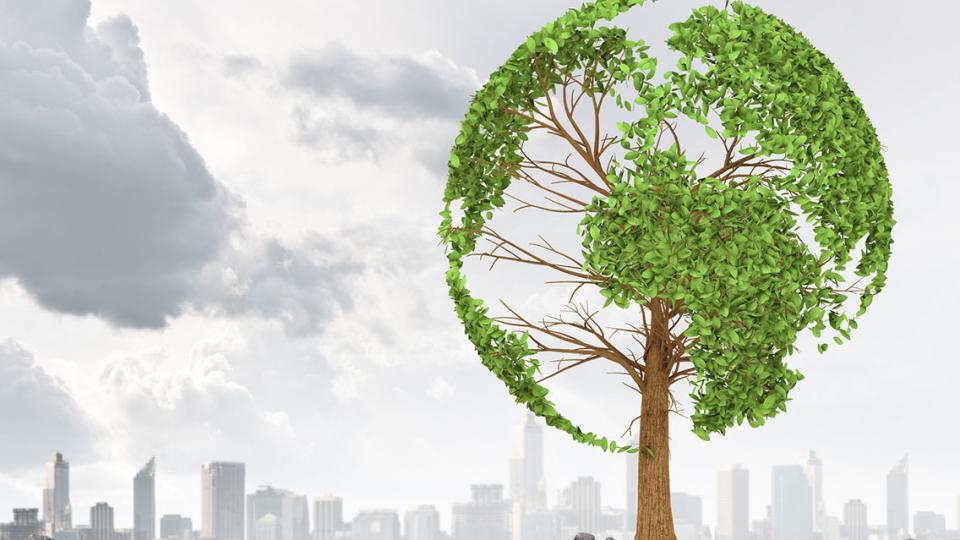How We Can Counter Climate Change by Reducing Food Loss and Waste

Food loss and waste is contributing to heating up the planet – in more ways than one.
One-third of all food produced for human consumption doesn’t even make it to the table, according to the Food and Agriculture Organization. This one-third instead gets lost or wasted, and the emissions used to produce it only add to the growing problem of climate change.
Food waste is a global challenge. But it doesn’t just mean people discarding their leftovers. Food waste and loss occurs from the time that seeds are sown to the final products ending up in your trash.
However, even before harvest, up to 40% of food crops are lost due to plant pests, diseases and extreme weather events.
Food loss occurs before the customer is involved – from harvesting and storage to transport, distribution and processing.
Why Does Food Loss and Waste Matter?
Food loss and waste has a huge impact on society – contributing to climate change, hunger, economic insecurity and pressure on limited resources. The FAO estimates that the equivalent of 1.3 billion tonnes of food is lost or wasted every year, causing US$1 trillion in economic costs, around US$700 billion in environmental costs and US$900 billion in social costs.
From an environmental perspective, an estimated 8 % of annual greenhouse gas emissions (approximately 4.4 gigatons) are created as a result of producing food that is either lost or wasted – four times what is produced by the aviation industry, by comparison. This in turn creates a vicious circle, contributing to an unstable climate, more prone to extreme weather events like floods and droughts that can wipe out entire crops. This changing environment also impacts soil quality and leads to an increase in diseases and insects that can plague crops.
After crops are harvested, food loss and waste can continue to leave a significant carbon footprint. Inefficient storage methods and indelicate handling can create GHG emissions, while transporting food that ultimately is not consumed still means haulage emissions and energy demands for refrigeration.
And then there is the biggest cost – the human one. Around 842 million people are estimated to be suffering from chronic hunger. Food insecurity remains one of the biggest challenges in the world today and food loss is a contributor to that.
Food loss occurs before the customer is involved – from harvesting and storage to transport, distribution and processing.
What Can We Do to Reduce Food Loss and Waste?
There is of course no single solution to tackling food loss and waste. It is a multi-faceted problem that requires a collective effort, from farmers, factories, restaurants, governments and all actors of the food values chain all the way to consumers.
It all starts on the fields where our food is grown. To ensure they can come to fruition, seeds need protection against disease and pests, as well as from extreme weather events. Further, without crop protection, an additional 970 million hectares would be needed to feed a growing population – more than the area of the U.S. For John Boelts, a lettuce grower in Arizona, USA, new seed varieties are key:
But technological innovations are not necessarily available all around the world. Smallholders in developing countries need access to the tools available to the rest of the world’s farmers. Helping them purchase higher-quality seeds is one part of the equation, but innovations are continuing to help even after the seed is in the ground. Free agronomic advice can steward sustainable farming practices, by enabling smaller and more precise applications of inputs, such as fertilizer.
One key factor in avoiding food loss is the ability to breed varieties of produce that have a longer shelf life, such as new varieties of tomato plants developed by Bayer. After studying over 500 tomato genomes, the Bayer team was able to create new hybrids that would remain edible for 12-14 days, rather than the typical 5-7 day shelf life, customized for the long transport ways in India where nearly 40% of all tomatoes are lost after harvest due to the lack of cold storage and inadequate infrastructure. The new varieties were able to reduce greenhouse gas emissions due to the reduction of food loss and waste. Before they had access to these varieties, farmers were racing against time, traveling over 250 miles a day to get their crop to the market before it degraded in the back of a hot truck. Increasing the tomato’s life span also reduces food inflation and makes food more affordable and accessible to lower income families. A similar approach has been implemented with melon crops, with a breed that turns a golden yellow at the exact moment of perfect ripeness, signaling to the farmer that it is time to harvest. By collecting at the most crucial moment, this melon reaches the consumer at its peak freshness, and remains so for longer.
From Farm to Fridge: How Can We Minimize Supply Chain Waste?
Beyond what can be done on the field, addressing transport and supply chain logistics after harvest are also crucial when it comes to cutting down food loss. According to Sanne Stroosnijder, program manager for sustainable food chains at Wageningen Food & Biobased Research, both the challenges and the potential solutions need to reflect the way the supply chain is organized in different regions.
In the developing world, most food loss typically takes place more near the farm, post-harvest, due to issues around storage, food processing and transportation infrastructure. By contrast, in richer countries, food is wasted far more near the fork, at the retail and consumer level.
Hybrid Tomato in India
Traditional tomato varieties tend to have a relatively short shelf life, that can result in spoilage and food loss during transport to remote urban markets. In a study for Bayer, Wageningen University in The Netherlands analyzed a new hybrid tomato variety, the Ansal, with increased shelf life and thicker cuticle that is developed to allow for long-distance transport under ambient conditions. Measurements showed reduction of losses in a typical postharvest chain from about 30% to less than 10% in the Ansal tomato. A climate impact analysis by the Agro-Chain Greenhouse Gas Emissions (ACE) calculator revealed that this results in substantial reduction of greenhouse gas emissions per tomato sold to consumers due to the hybrid’s ability to withstand long transport times and arrive safely to their destination in good condition.
For more information about Ansal, visit this WBCSD Case Study on Tackling Food Loss & Waste.

“It also shows itself differently in different parts of the world.” With 500 million smallholder farmers providing 80% of food throughout Asia, Africa and South America, having access to solutions is crucial, not only to continue to feed so many, but to guard against the effects of climate change.
This means finding solutions for each particular part of the supply chain. For example, keeping produce protected whilst in storage is crucial. Bayer has developed digital pest management solutions that allow processors, retailers and restaurants to monitor these environments so as to not lose food to disease or pests.
For a supply chain to work to the best of its ability and minimize food loss, Stroosnijder believes that the different links along the chain need to work more closely together. Dealing with fluctuation in demand during the global pandemic has made this collaboration even more necessary, with key learnings being that agility is paramount: “We’re talking about nature, live plants, fruits and vegetables and animals – they don’t take COVID-19 into account,” says Stroosnijder.
Retailers could also look at how much value is currently given to the aesthetic appeal of produce.
However, thanks to a recent proliferation of apps and initiatives, consumers are starting to embrace fruit and vegetables that may have been rejected due to aesthetics. But consumers don’t just have to rely on apps to make a difference in curbing their household food waste. There are plenty of simple ways to minimize food waste and protect our climate. From the farmer to the foodie, we can all do our part. Why not start today.
























